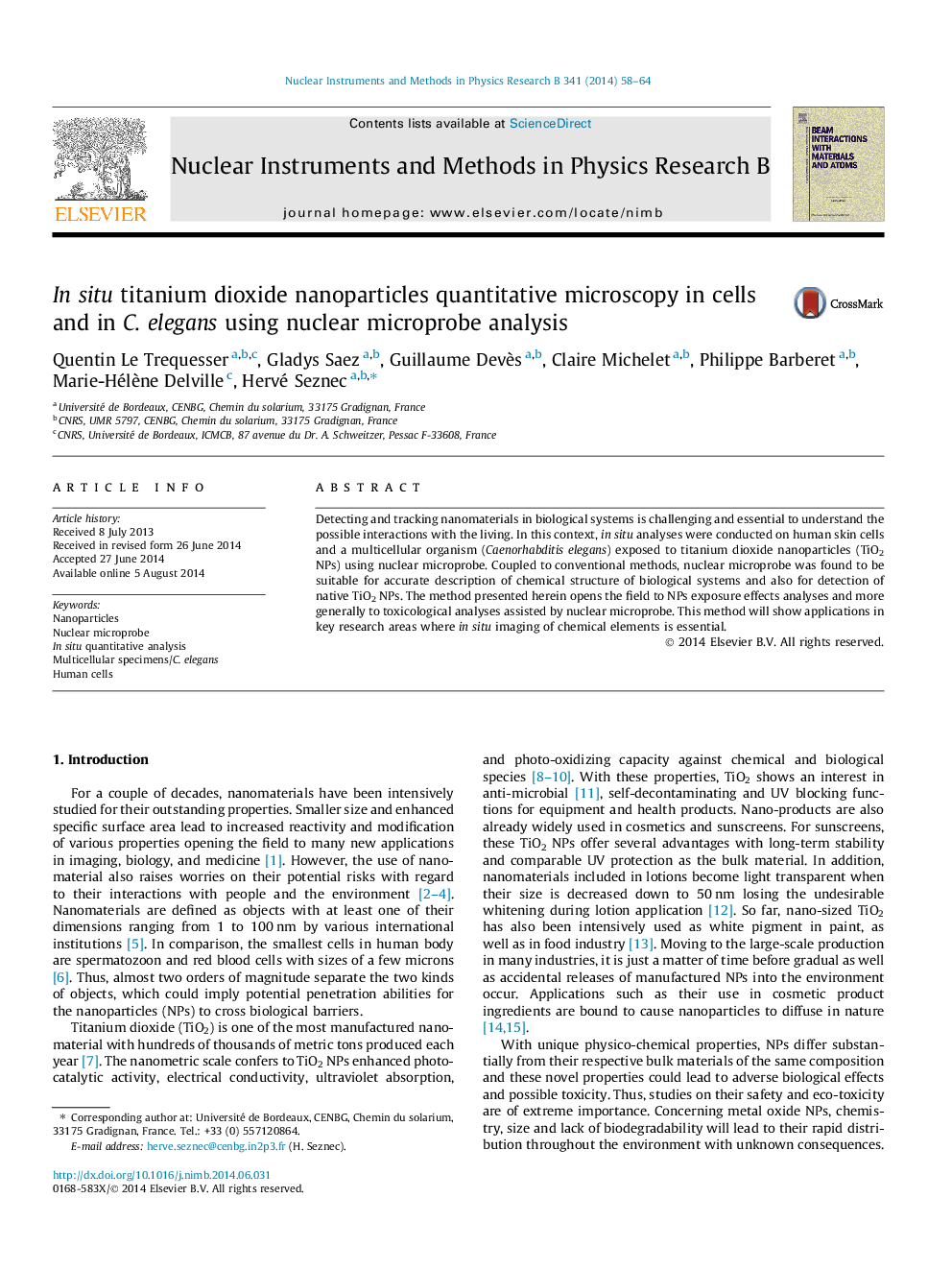| Article ID | Journal | Published Year | Pages | File Type |
|---|---|---|---|---|
| 1682912 | Nuclear Instruments and Methods in Physics Research Section B: Beam Interactions with Materials and Atoms | 2014 | 7 Pages |
Detecting and tracking nanomaterials in biological systems is challenging and essential to understand the possible interactions with the living. In this context, in situ analyses were conducted on human skin cells and a multicellular organism (Caenorhabditiselegans) exposed to titanium dioxide nanoparticles (TiO2 NPs) using nuclear microprobe. Coupled to conventional methods, nuclear microprobe was found to be suitable for accurate description of chemical structure of biological systems and also for detection of native TiO2 NPs. The method presented herein opens the field to NPs exposure effects analyses and more generally to toxicological analyses assisted by nuclear microprobe. This method will show applications in key research areas where in situ imaging of chemical elements is essential.
